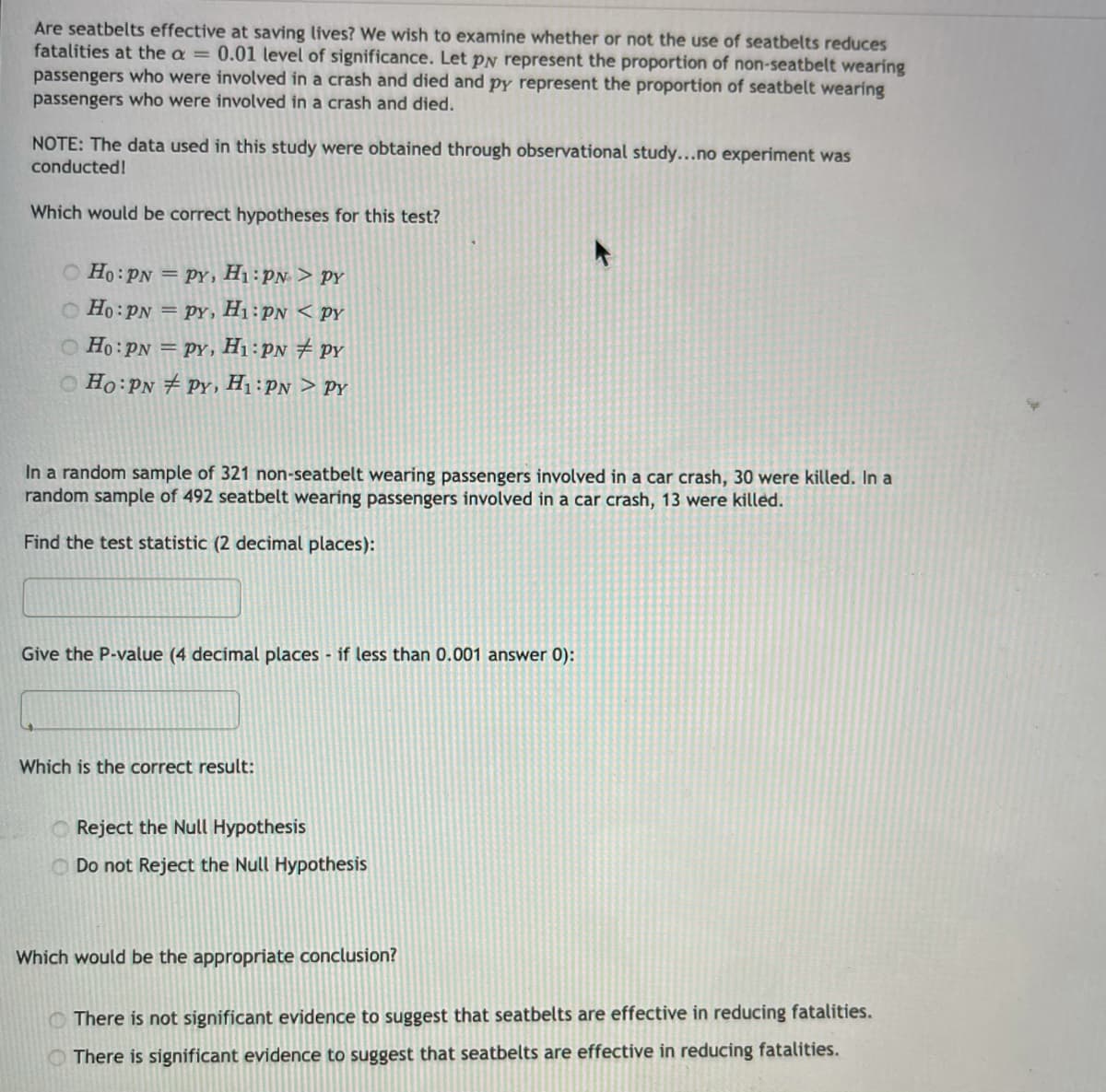Are seatbelts effective at saving lives? We wish to examine whether or not the use of seatbelts reduces fatalities at the a = 0.01 level of significance. Let pN represent the proportion of non-seatbelt wearing passengers who were involved in a crash and died and py represent the proportion of seatbelt wearing passengers who were involved in a crash and died. NOTE: The data used in this study were obtained through observational study...no experiment was conducted! Which would be correct hypotheses for this test? O Ho: PN = pY, H1:PN > pY Họ: PN = pY, H1:PN < py Ho:PN = PY, H1 :PN # py O Ho:PN + PY, H1 :PN > Py In a random sample of 321 non-seatbelt wearing passengers involved in a car crash, 30 were killed. In a random sample of 492 seatbelt wearing passengers involved in a car crash, 13 were killed. Find the test statistic (2 decimal places): Give the P-value (4 decimal places if less than 0.001 answer 0): Which is the correct result: Reject the Null Hypothesis O Do not Reject the Null Hypothesis Which would be the appropriate conclusion? O There is not significant evidence to suggest that seatbelts are effective in reducing fatalities. O There is significant evidence to suggest that seatbelts are effective in reducing fatalities.
Correlation
Correlation defines a relationship between two independent variables. It tells the degree to which variables move in relation to each other. When two sets of data are related to each other, there is a correlation between them.
Linear Correlation
A correlation is used to determine the relationships between numerical and categorical variables. In other words, it is an indicator of how things are connected to one another. The correlation analysis is the study of how variables are related.
Regression Analysis
Regression analysis is a statistical method in which it estimates the relationship between a dependent variable and one or more independent variable. In simple terms dependent variable is called as outcome variable and independent variable is called as predictors. Regression analysis is one of the methods to find the trends in data. The independent variable used in Regression analysis is named Predictor variable. It offers data of an associated dependent variable regarding a particular outcome.

Trending now
This is a popular solution!
Step by step
Solved in 2 steps with 1 images


